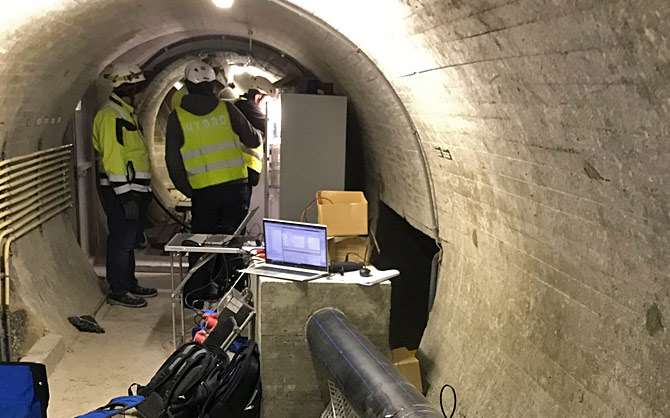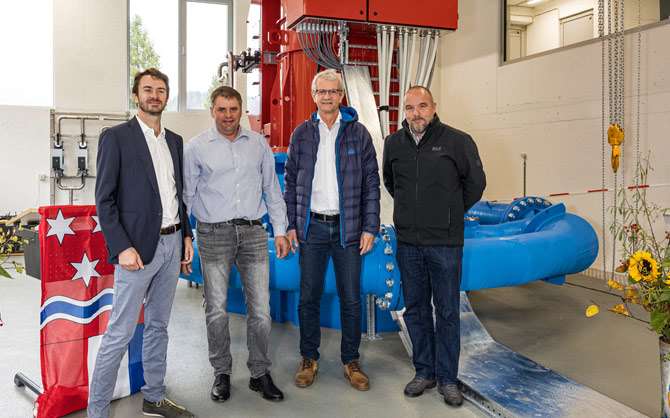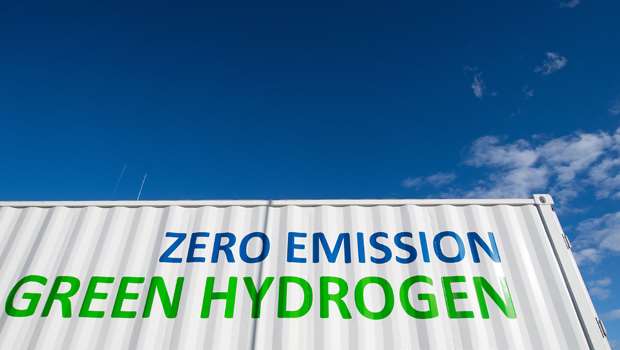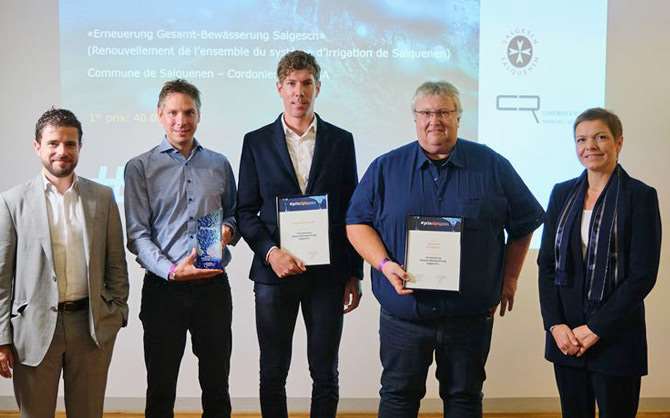Industry-specific disclosures
G4
Installed capacity
EU1
An overview of the installed capacities per technology can be found in the Annual Review section of the Alpiq Holding Ltd. Annual Report 2021.
Net energy production
EU2
An overview of the net energy production per technology is provided in the Annual Review section of the Alpiq Holding Ltd. Annual Report 2021.
Renewable energy sources and other important topics
With the sustainable energy business, Alpiq contributes to a better climate and strengthening of the security of supply.
Alpiq has a diverse international portfolio of facilities for energy production from renewable resources. To support the energy transition goals, Alpiq intends to continue developing this portfolio throughout Europe and to optimise the use of the facilities while keeping the impact on nature and the environment as low as possible.
Alpiq’s services in many European countries support large and industrial customers in marketing electricity from renewable energy or in their efforts to sustainably reduce the environmental footprint of their own business activities.
Several associated initiatives have been launched in the past few years and continued in 2021; some initiatives or projects were newly initiated in 2021. A selection is given below.
Development of wind power projects in Switzerland
Despite the complex development environment for wind energy in Switzerland, Alpiq is resolutely committed to this energy. The use of wind energy offers a specific solution for local energy supply. In addition, it provides particularly valuable ‘winter energy’ for security of supply, as around two thirds of production is generated in the winter half-year. The most advanced project is the Bel Coster wind farm, which is located on the ridge of Mt Le Suchet in the canton of Vaud. With its new wind turbines, this facility will produce around 80 GWh of power per annum. There are also two other projects in the canton of Vaud that Alpiq is planning to implement.
Construction of a wind farm in Sweden
Alpiq will also continue to develop its portfolio of new renewable energies at an international level. The construction work at the Tormoseröd wind farm in south-west Sweden began in 2021. With eleven turbines, each rated at 6.6 MW of power for a total installed capacity of 72.6 MW, this wind farm will be able to generate around 210 GWh of renewable energy each year. During the construction phase, Alpiq will be responsible for the project management activities and, during operation, for technical and commercial asset management.
Increase in efficiency at the hydropower plant with minimal impact on the environment
A certain amount of water must be returned to the river below hydropower plants. This is the intention of the Federal Law on the Protection of Water Bodies (Water Protection Act) in Switzerland. In order to still be able to harness the power of this minimum downstream flow quantity for climate-friendly power production, Alpiq uses small turbines at various locations. For example, in the canton of Valais at the Moiry dam, which is part of the power plant complex of the Forces Motrices de la Gougra (Alpiq share: 54 %). The turbine enables additional energy to be generated on the more than 100 m high gradient between the water level of the reservoir and the foot of the outer dam. The projected annual production of the 90 kW turbine, which was commissioned at the end of October 2021, is expected to be around 630 MWh per year, which corresponds to the average consumption of 180 Swiss households. This additional production will be achieved with practically no impact on the environment.

Commissioning of a new small-scale hydropower plant in Switzerland
Alpiq is also continuing to expand its portfolio of small-scale hydropower plants. In October 2021, the new Hüscherabach power plant (Alpiq share: 60 %) was inaugurated in the canton of Graubünden. The new modern power plant replaces the old facility from the 1930s. Production will grow from 1.1 GWh to about 6.1 GWh per year. During the new construction, which was guided by environmental specialists, several measures were taken to reduce the environmental impact of the power plant. In addition, Kraftwerk Hüscherabach AG is making a financial contribution to an ecological compensation programme for the revitalisation of the Hinterrhein.

Implementation of environmental compensation measures at the pumped storage power plant
With its commercial commissioning, the Nant de Drance pumped storage power plant is accelerating the energy transition by enabling the integration of more new renewable energies into the electricity system. Nant de Drance also provides more grid stability and thus strengthens the security of supply. The Nant de Drance SA (Alpiq share: 39 %) implements 15 ecological compensation measures in collaboration with environmental associations and invests over CHF 22 million for this purpose. The ecological impact of the construction of the pumped storage power plant is thus minimised. The measures contribute to the conservation of biodiversity, the support of wet and dry habitats, the fight against invasive flora and fauna and to improving the landscape. Six of these measures have already been realised; the rest are in the process of implementation or are currently awaiting approval from the relevant authorities.

Green hydrogen for emissionfree mobility
Green hydrogen is considered one of the keys to decarbonising mobility – particularly in heavy goods transport. Alpiq recognised this early on and promotes the production of green hydrogen using electricity from renewable energy as well as the development of new business models to develop the hydrogen economy.

Photo: Jean-Luc Grossmann
Example 1: Hydrospider
In 2021, the joint venture Hydrospider (Alpiq share: 45 %), together with Hyundai Hydrogen Mobility and the H2 Mobility Switzerland Association, further expanded the business model for emission-free mobility that is unique in Europe. As at the end of 2021, some 50 fuel-cell electric heavy goods vehicles from Hyundai were already on Switzerland’s roads. The Hydrospider 2 MW electrolysis plant at the Gösgen hydropower plant is still the largest production facility in Switzerland for green hydrogen.

Photo: Jean-Luc Grossmann
Example 2: New project in Freienbach
At the end of July 2021, Alpiq, EW Höfe and SOCAR Energy Switzerland unveiled plans to build an electrolysis plant with a capacity of up to 10 MW for the production of green hydrogen. It is directly connected via a pipeline to the nearby motorway service station, where two hydrogen filling stations will be built. The waste heat is to be fed into the newly emerging regional district heating network, which will significantly increase the overall efficiency of the facility.
Commitment to the sustainable use of water – #prixalpiq
To protect the precious resource of water and to promote the sustainable use of it, Alpiq launched the #prixalpiq in 2021 together with the Association of Conceding Municipalities of the canton of Valais. This prize is awarded every year to a project that is carried out in collaboration with a Valais municipality and that aims to achieve more sustainable water management. The winning project receives financial support; Alpiq also undertakes to assist with the implementation of the winning project for one year. In addition to the winning project, a ‘winner of hearts’ was also chosen in 2021.
#prixalpiq: The winners 2021

Proactive maintenance planning
In order to achieve the energy transition goals, not only do we need additional power plant facilities for the production of electricity from renewable energy and storage possibilities; it is also worth continually investing in existing facilities. Another important point is research and education to strengthen hydropower for its role in a decentralised and decarbonised world.
Example 1: For hydropower plants, maintenance planning is a complex task with many variables. Power plant managers must make decisions, taking into account forecasts on the development of electricity prices, inflows and the ageing of the facilities, in order to choose the right time for the appropriate investments. They are now supported in this process by the maintenance plan simulator MPsim, which was developed by an external agency with the help of Alpiq experts. It models power plant facilities, simulates different variants and compares the results. MPsim is currently used for the hydroelectric complex of the Alpiq portfolio but can also be extended to thermal and new renewable energies. The services and results are also available to external customers and for research purposes.
Example 2: Alpiq, HYDRO Exploitation, Forces Motrices Valaisannes (FMV) and the School of Engineering of the HES-SO Valais-Wallis joined forces in 2021 to jointly develop industrial expertise in the field of power production from hydropower – particularly in the area of digitalisation. For this purpose, they created the ‘Hydro Alps Lab’ for application-oriented research and development.
Supporting customers in achieving their sustainability goals
Alpiq manages wind power and biogas facilities as well as PV plants for its customers and partners across Europe, with over 3,000 MW total power in Germany alone. In this way, electricity from renewable sources is marketed efficiently, and Alpiq directly contributes to the efficiency of facilities and thus to further expansion as well as to improved grid stability through high forecast quality.
Furthermore, Alpiq collaborates with various partners and companies to support the procurement of renewable energy as an important part of a sustainability strategy and towards emission-free energy provision. Among other things, Alpiq also provides its customers so-called Power Purchase Agreements (PPAs) in various forms and financing of new construction projects or secures the continued operation of old wind and PV plants by purchasing production volumes from renewable sources at fixed prices.
- Example 1 – Aquila Capital and Alpiq sign a 5-year power purchase agreement (PPA) for a 50 MW solar plant in Almeria
- Example 2 – Alpiq, aventron and Chiesi sign PPA for wind asset in Italy
- Example 3 – Alpiq supplies Wienerberger with wind energy in real time
- Example 4 – Fixed price for biogas electricity: ASL and Alpiq collaborate (german only)
- Example 5 – Waste incineration plants and Alpiq extend partnership